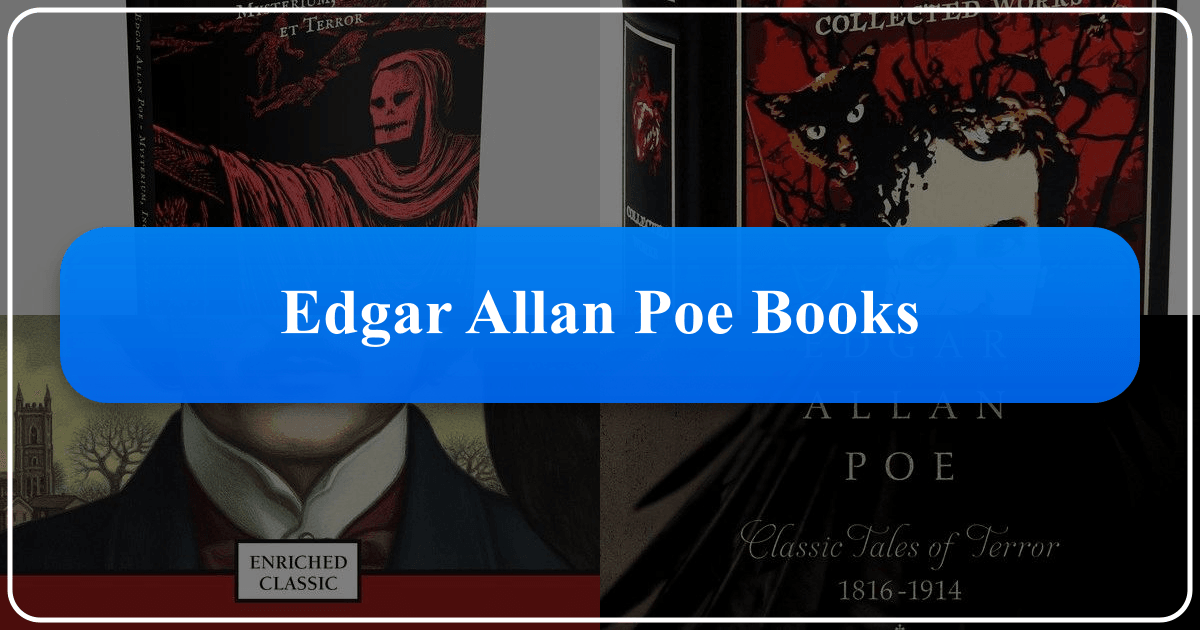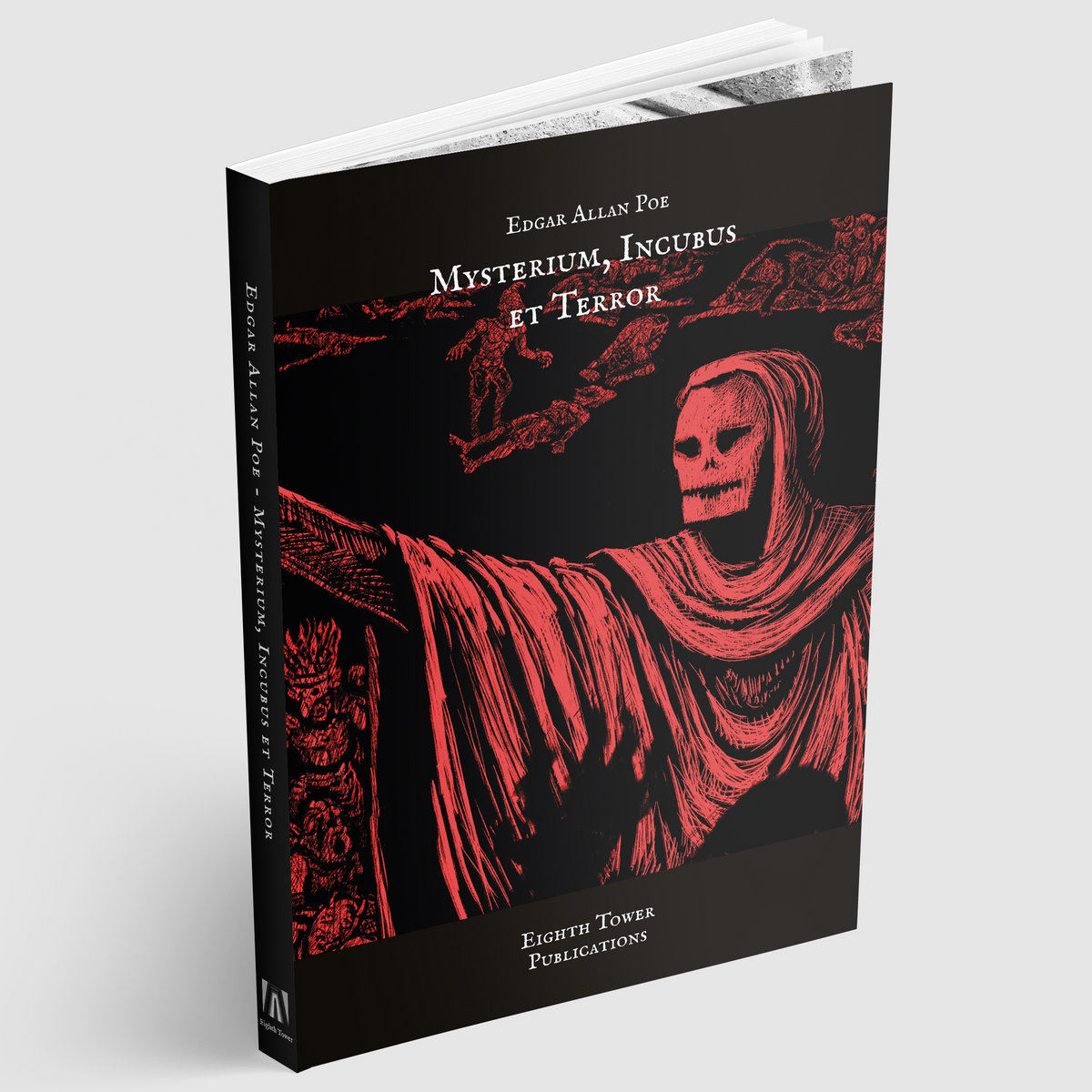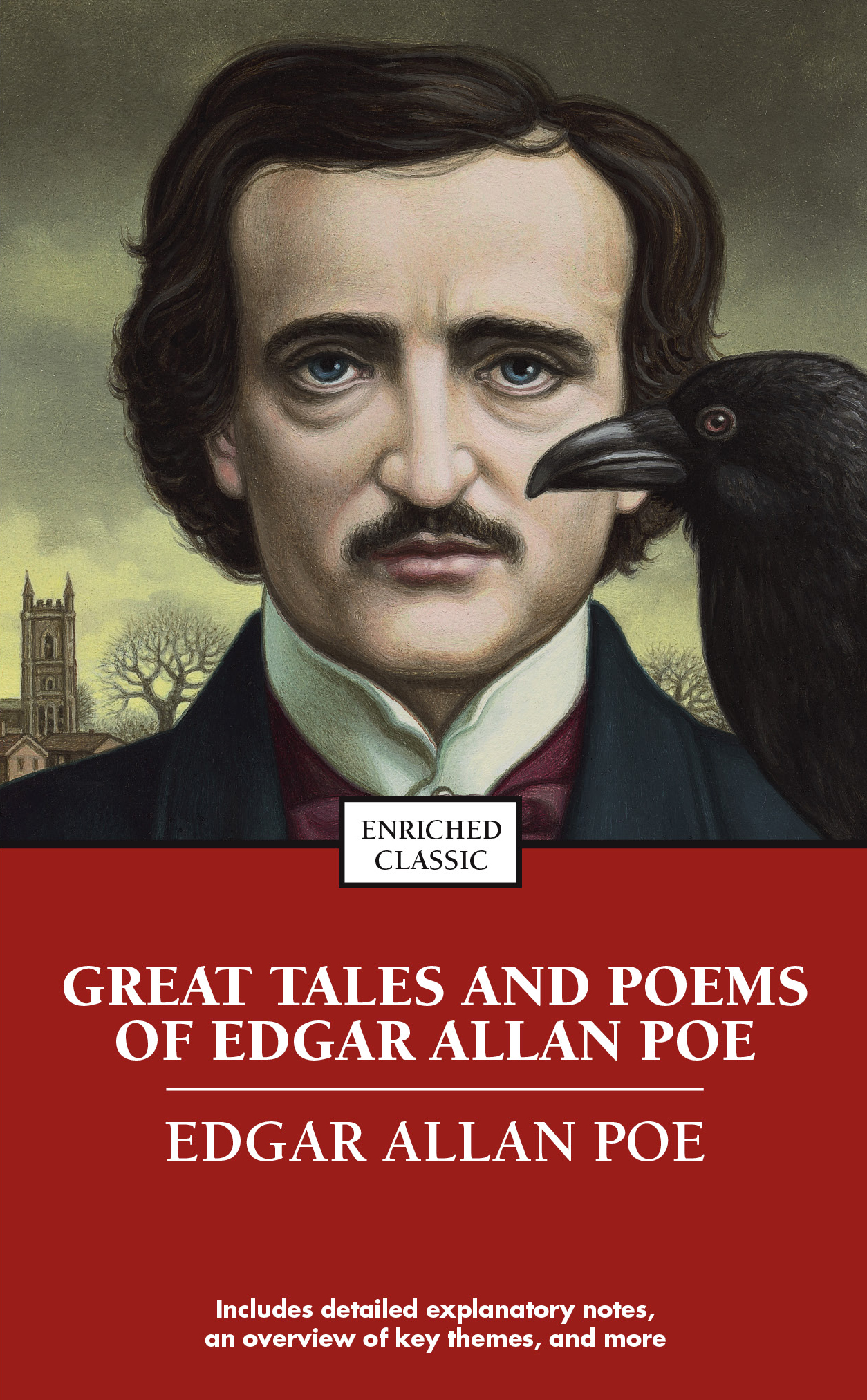Edgar Allan Poe Books: A Comprehensive Exploration

Edgar Allan Poe, a name synonymous with mystery, macabre, and the exploration of the human psyche’s darkest recesses, continues to captivate readers centuries after his death. His enduring legacy is built upon a body of work encompassing poetry, short stories, and a novel, each imbued with his distinctive style and thematic preoccupations. This exploration delves into the world of Edgar Allan Poe’s books, examining his genres, literary influences, and lasting cultural impact.
Poe’s Literary Genres and Masterpieces

Poe’s literary contributions span several genres, but he is perhaps best known for his mastery of the macabre and psychological horror. His short stories, often characterized by their brevity and intense focus on atmosphere and suspense, are considered cornerstones of the genre. These tales frequently delve into the themes of death, madness, and the unsettling aspects of human nature.

Psychological Horror: This is arguably Poe’s most prominent genre, where he skillfully explores the fragility of the human mind and the descent into madness. “The Tell-Tale Heart,” arguably his most famous short story, perfectly exemplifies this. The narrator, obsessed with the old man’s “vulture eye,” meticulously plans and executes a murder, only to be undone by the increasingly loud sound of his own guilt-ridden heartbeat. Similarly, “The Black Cat” chronicles a descent into alcoholism and violence, culminating in a horrific crime fueled by a deranged obsession. “The Pit and the Pendulum,” a masterpiece of suspense, throws the reader into the terrifying clutches of the Spanish Inquisition, where the narrator faces a slow, agonizing death.
Gothic Fiction: Poe’s works frequently incorporate elements of Gothic fiction, with its emphasis on dark settings, decaying architecture, and supernatural or psychological terror. “The Fall of the House of Usher” epitomizes this blend, where the crumbling mansion mirrors the decaying mental state of its inhabitant, Roderick Usher, and his doomed sister, Madeline. The story’s atmospheric intensity and unsettling symbolism have secured its place as a classic of Gothic literature. “Berenice” and “Ligeia” also showcase Poe’s masterful use of Gothic elements, creating an atmosphere of dread and unease that lingers long after the final page is turned.
Detective Fiction: Poe is also credited with the creation of the modern detective story, although his detective, C. Auguste Dupin, predates Sherlock Holmes. In “The Murders in the Rue Morgue” and “The Purloined Letter,” Dupin’s keen intellect and analytical skills are showcased as he unravels seemingly impossible crimes, demonstrating Poe’s innovative approach to storytelling. These stories lay the groundwork for the conventions and tropes that would define the genre for generations to come.

Poetry: Poe’s poetic works are equally influential, known for their musicality, dark romanticism, and exploration of loss and grief. “The Raven,” perhaps his most celebrated poem, uses vivid imagery, haunting rhythm, and the recurring refrain of “Nevermore” to craft an unforgettable atmosphere of despair and melancholy. Other notable poems like “Annabel Lee,” “Ulalume,” and “Lenore” explore similar themes of death, lost love, and the psychological torment of grief.
Science Fiction and Other Genres: Poe’s imaginative reach extended beyond horror and detective fiction. His work also delves into science fiction, albeit in early forms. “MS. Found in a Bottle” and “A Descent into the Maelström” explore themes of the vastness and power of the natural world, suggesting a fascination with the unknown and the potential for extraordinary events. His body of work also includes satires, fables, and verse dramas, demonstrating the diversity of his talents and his engagement with a wide range of literary forms.
Exploring Edgar Allan Poe’s Writing Style
Poe’s distinctive writing style is characterized by several key elements:
-
Atmosphere and Suspense: Poe meticulously crafts atmosphere and builds suspense through vivid imagery, carefully chosen language, and a deliberate pacing that slowly ratchets up tension. He masterfully uses sensory details to immerse the reader in the story’s unsettling world, creating a sense of unease and anticipation.
-
Unreliable Narrators: Many of Poe’s stories employ unreliable narrators, characters whose perspectives are skewed by mental instability, delusion, or self-deception. This narrative technique adds a layer of ambiguity and psychological depth, forcing the reader to question the truth and reliability of the events described.
-
Symbolism and Allegory: Poe frequently uses symbolism and allegory to add depth and complexity to his narratives. Symbols often represent deeper psychological or philosophical themes, encouraging the reader to engage with the story on multiple levels.
-
Musicality and Rhythm: Poe’s writing, particularly in his poetry, possesses a distinct musicality and rhythm. His use of rhyme, meter, and sound devices creates a hypnotic effect, adding to the overall atmosphere and emotional impact of the work.
The Cultural Impact of Edgar Allan Poe’s Books
Poe’s impact extends far beyond the literary realm. His works have profoundly influenced literature, film, and popular culture, leaving an indelible mark on the imagination of generations.
Literary Influence
Poe’s innovative techniques and exploration of psychological horror have profoundly influenced subsequent writers, shaping the development of the genre and influencing countless authors working within similar thematic territories. His stylistic innovations and explorations of the subconscious laid the groundwork for many later writers to expand on similar themes.
Adaptations
Poe’s stories and poems have been adapted into numerous films, television shows, and other media, demonstrating their enduring appeal and adaptability to various artistic mediums. These adaptations often amplify the visual and emotional impact of Poe’s original works, introducing his stories to wider audiences across different generations. The continued adaptation and reimagining of his works in contemporary cinema showcases the relevance of his themes and characters in the modern world.
Awards and Recognition
Poe’s literary achievements have been widely recognized, with his works receiving critical acclaim and securing his place in literary history. While he may not have received widespread recognition during his lifetime, posthumous recognition has firmly established him as a pivotal figure in American literature. His contributions to multiple literary genres remain highly influential, highlighting the timeless quality of his writing.
Literary Communities and Fandom
Poe’s work has fostered passionate communities and fervent fandoms worldwide. These communities actively engage with his works, through discussions, analysis, and creative interpretations, fostering a vibrant and dynamic engagement with his literary legacy. The sustained interest in Poe’s work, and the vibrant communities that exist around them, showcase the ongoing relevance of his dark romanticism and exploration of the human condition.
In conclusion, Edgar Allan Poe’s books represent a remarkable contribution to literature and popular culture. His exploration of dark themes, his innovative storytelling techniques, and his enduring influence on subsequent writers and artists solidify his position as a literary giant whose works continue to resonate with readers across time and cultures. His exploration of the darker aspects of the human condition remains profoundly relevant, ensuring his legacy continues to haunt and inspire for generations to come.